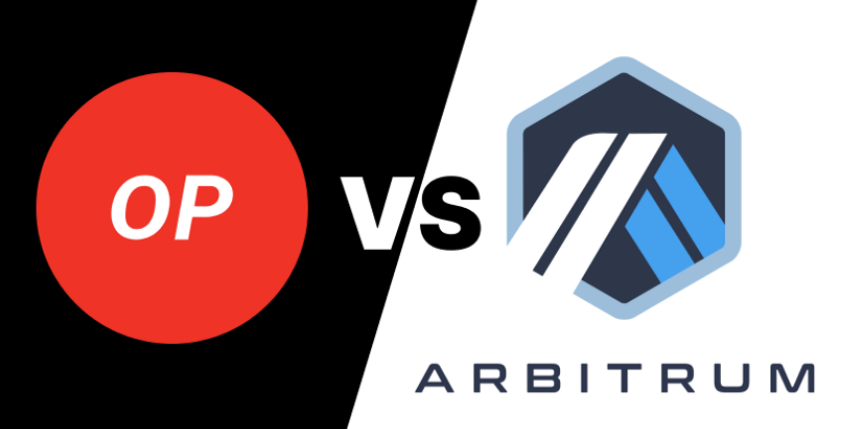
In terms of both total value and awareness, there are two layer 2s that are dominating the landscape: Optimism and Arbitrum. Though both are great choices for using Ethereum with high security, low transaction costs, and fast speeds, there are a few differences between them that could make one more enticing than another for some users.
For those who are unaware, Layer 2s are a type of scaling technology that helps make Ethereum scalable. They are analogous to zip files on computers, in that they “roll up” batches of transactions into one transaction on the main Ethereum chain. Additionally, instead of executing the transaction on-chain, they do off-chain execution with on-chain data storage, which increases efficiency. This leads to an overall cheaper and faster experience while still retaining the security benefits of Ethereum, and the leaders in the space are Arbitrum and Optimism.

Currently, Arbitrum is the more popular of the two rollups and has over $1 billion in total value locked and 51% of the layer 2 market share according to DeFiLlama. One of the reasons for its large market share is due to Arbitrum’s recent Nitro upgrade, which they are branding as a second-generation layer 2 capable of “higher throughput, faster finality, and more efficient dispute resolution” according to their whitepaper. The initial launch of Nitro has seen great success, and Arbitrum is currently the general-purpose rollup with the lowest fees.

The three biggest DeFi applications on Arbitrum by TVL are GMX, Stargate, and Sushi. GMX is a decentralized spot and perpetual futures exchange allowing users to speculate using leveraged assets. Its GMX token accrues 30% of protocol fees and has been extremely lucrative for holders thus far. The second biggest protocol, Stargate, is a cross-chain liquidity protocol deployed on several different chains, including Optimism. Similarly, Sushi is a decentralized exchange present on essentially every EVM-compatible chain. In total, DeFiLlama tracks 119 DeFi applications on Arbitrum.
Optimism is close behind in second place with about $900 million TVL but only has 75 DeFi dApps with enough volume to be tracked by DeFiLlama. Their top three protocols are Aave, Synthetix, and Velodrome. Aave is the biggest DeFi borrowing and lending protocol and is available on several chains. Synthetix, one of the oldest DeFi applications, is a derivative liquidity protocol only available on mainnet Ethereum and Optimism. Velodrome is Optimism’s most unique DeFi application, and it is a decentralized exchange with unique tokenomics inspired by DeFi developer Andre Cronje’s Solidly exchange.

In late April 2022, Optimism announced the release of OP, the platform’s governance token, and airdropped it to early users of their layer 2. At its peak, this airdrop was worth several thousand dollars to those lucky enough to receive it. For those who did not, there is still hope: Optimism mentioned that they plan to dedicate 19% of the total OP supply to user airdrops, and this first airdrop only allocated 5% of the total supply, leading many to speculate that there will be more rewards to those who continue to use the layer 2.
In response, Steven Goldfeder, co-founder of Arbitrum’s parent company Offchain Labs, tweeted a cryptic message suggesting that Arbitrum will also have an airdrop coming soon. This has caused a flurry of activity on Arbitrum ever since, as users attempt to make themselves eligible for the potential free thousands of dollars by interacting with DeFi applications, donating to public goods, and even performing activities in Arbitrum’s Discord. Arbitrum also launched its Odyssey campaign, which was meant to be a multi-week activity that would reward users with NFTs for interacting with specific applications. Due to the congestion it caused on the network, it was halted after the first week and was planned to continue after the Nitro upgrade, but it has yet to resume.

Overall, both rollups provide strong security guarantees and scalability with a plethora of applications to interact with. Currently, due to higher TVL numbers, more dApps, and cheaper fees, Arbitrum seems to be the better choice between the two, but Optimism’s unique applications like Velodrome mean it cannot be fully counted out. One thing is for certain: layer 2s are the future of Ethereum scaling, and both Optimism and Arbitrum are helping Ethereum to achieve its goal of becoming the world’s settlement layer.






All Comments